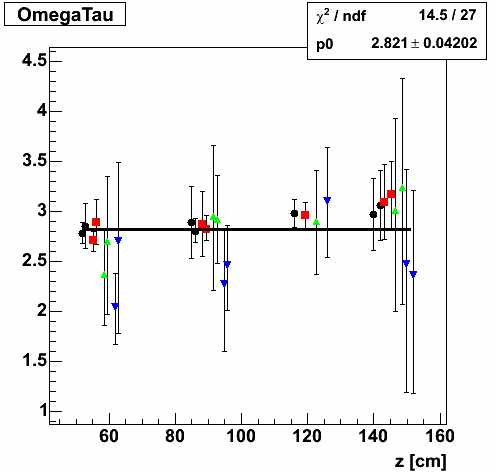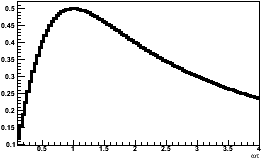Old Work
[editorial notes, added 2013-11-07:
I put these old results on a web page back in 2010:
https://drupal.star.bnl.gov/STAR/comp/calib/tpc/omegatau_rphi
I see also that I used both the external and the GG-varied runs in the result, but one can see that the GG data (green & blue) has some preference for a lower OmegaTau.
]
These two plots are the same data, the axis was just changed from TensorV1 to make the OmegaTau plot:


I believe this data was made using the extra resistor run (day 63). I think I would measure how far "off" we were in correction the distortion, and scale that "offness" into a fractional change of Const_1 in Jim's StMagUtilities code, and then turn that into TensorV1, which was also easily converted in OmegaTau.
TensorV1 is used in Const_1, which is used in the phi distortion due to the radial E field caused by the incorrect GG voltage
Const_1 = TensorV1*OmegaTau / ( 1. + TensorV1*TensorV1*OmegaTau*OmegaTau ) ;
"OmegaTau" in Jim's code is : -10.0 * B[2] * StarDriftV / StarMagE
-10.0*4.95*5.56/(-27950/208.7)
(const double)2.05504164579606430e+00
So, approximately
TensorV1*OmegaTau = 1.36 * 2.055 = 2.79 = ~2.8
and
TensorV2*OmegaTau = 1.11 * 2.055 = 2.28 = ~2.3
Const_1 vs. OmegaTau:

So in the range of which we're dealing, Increasing omegatau decreases Const_1 and decreases distortions.